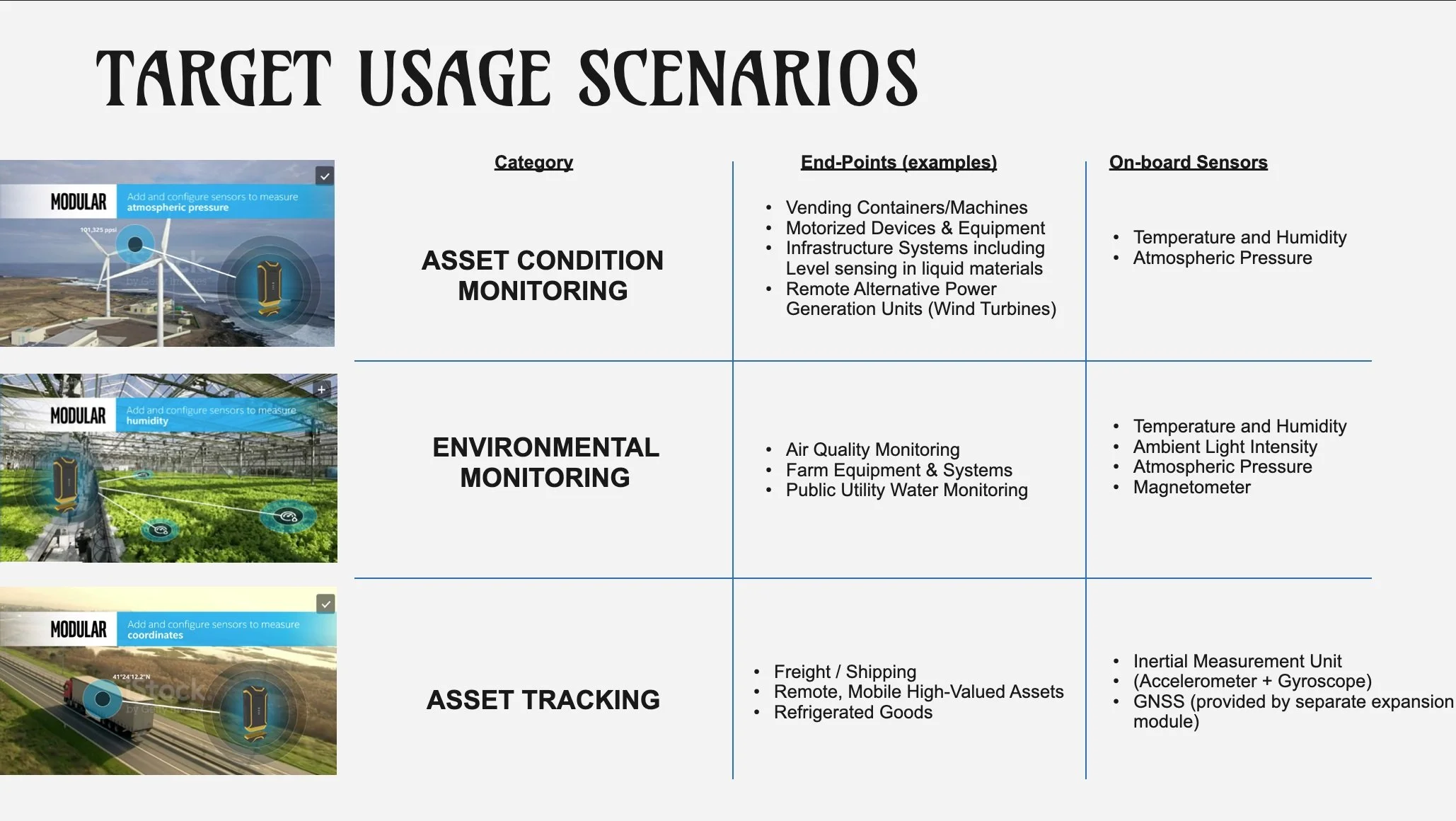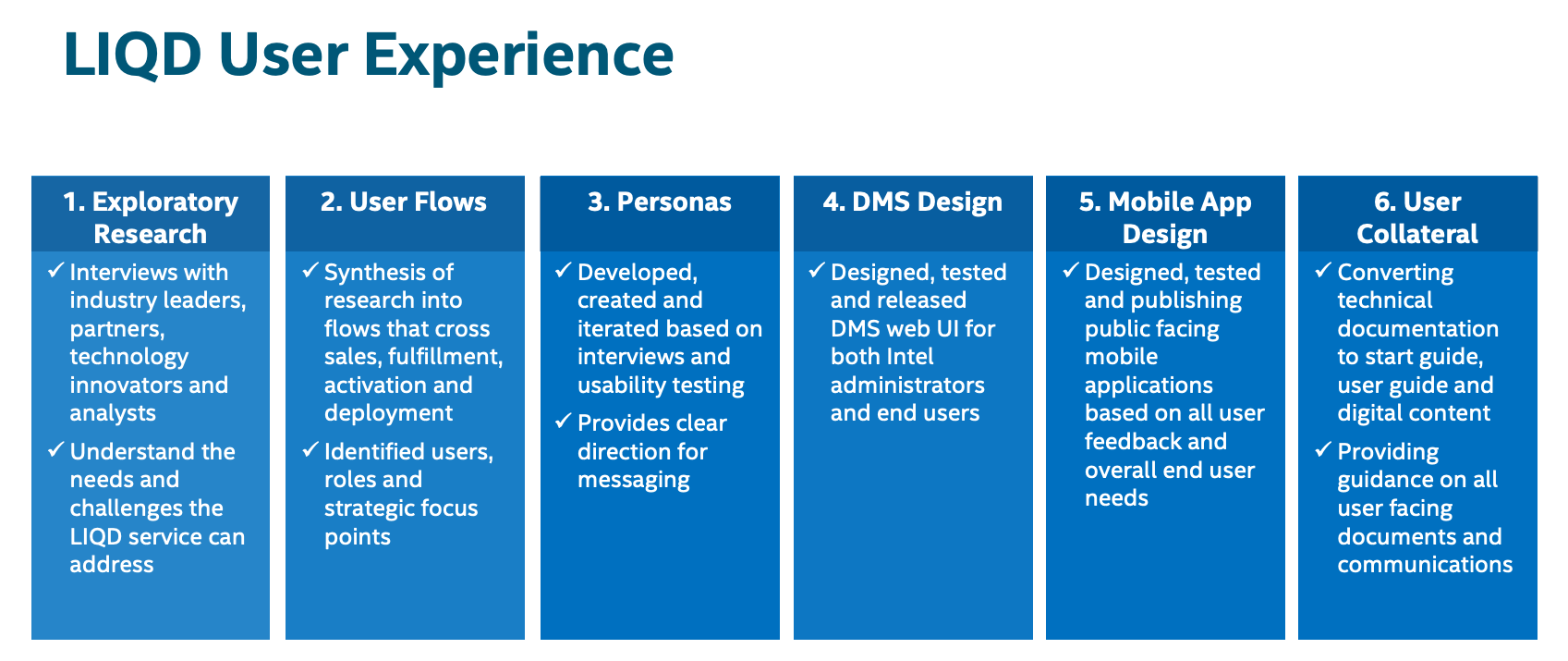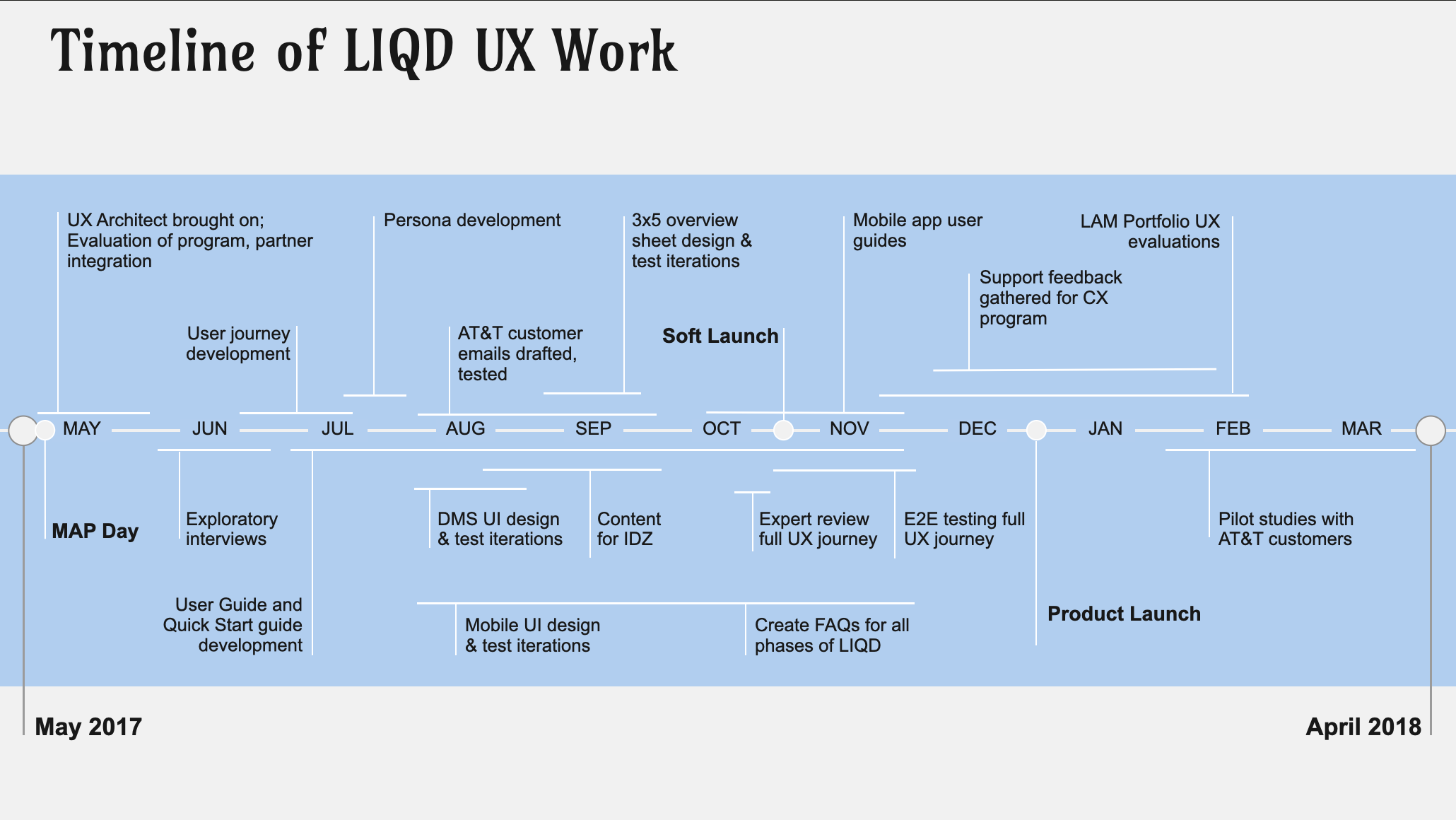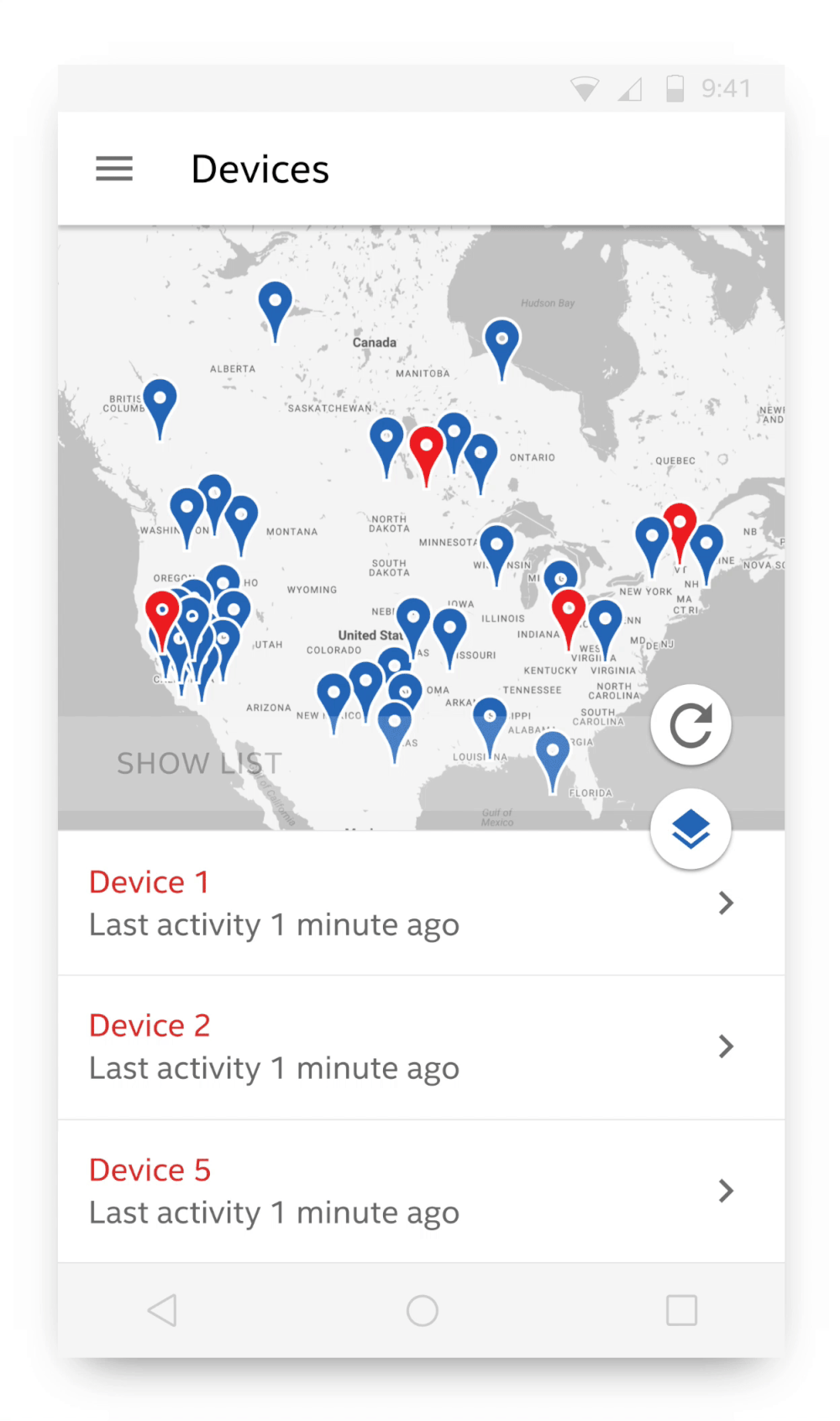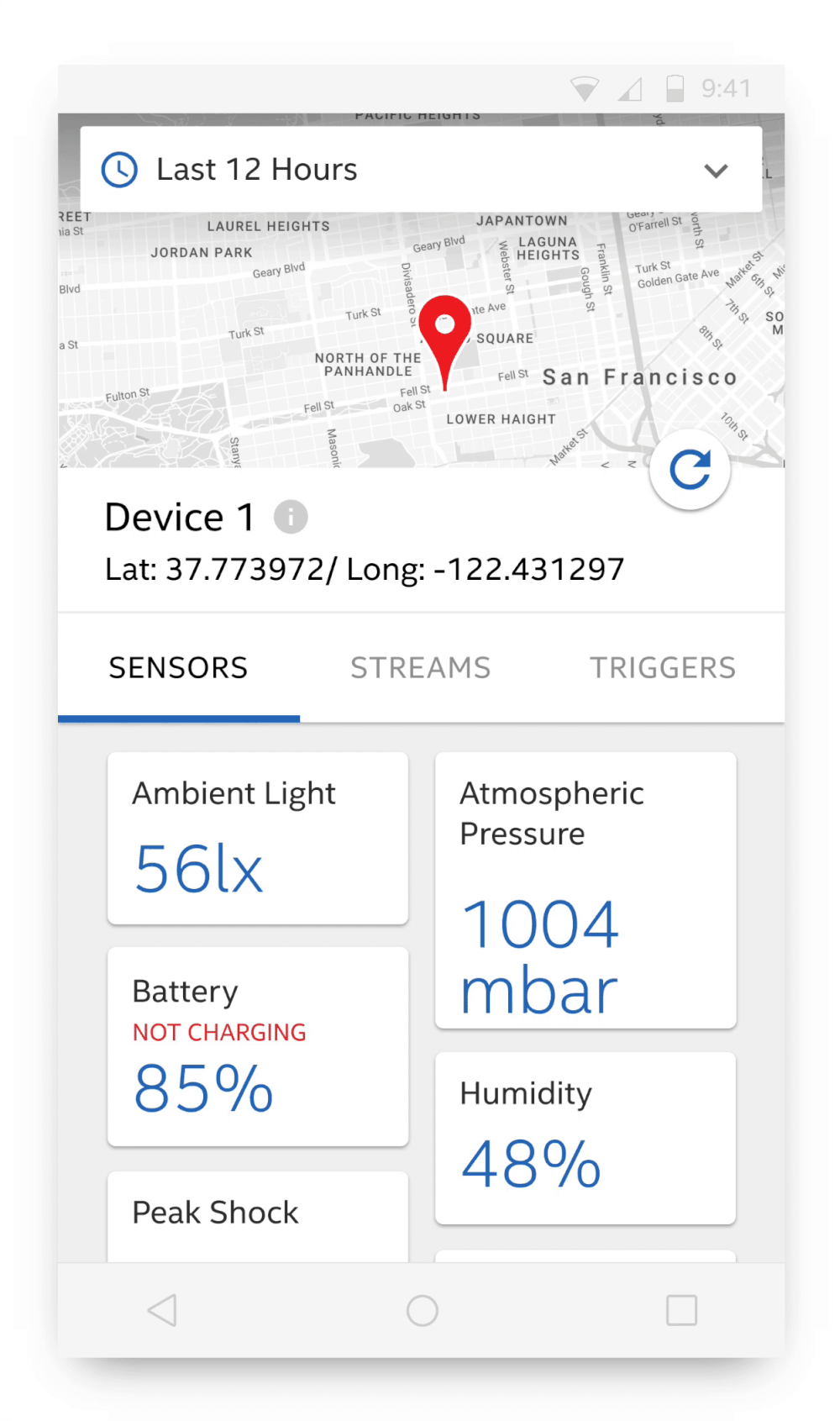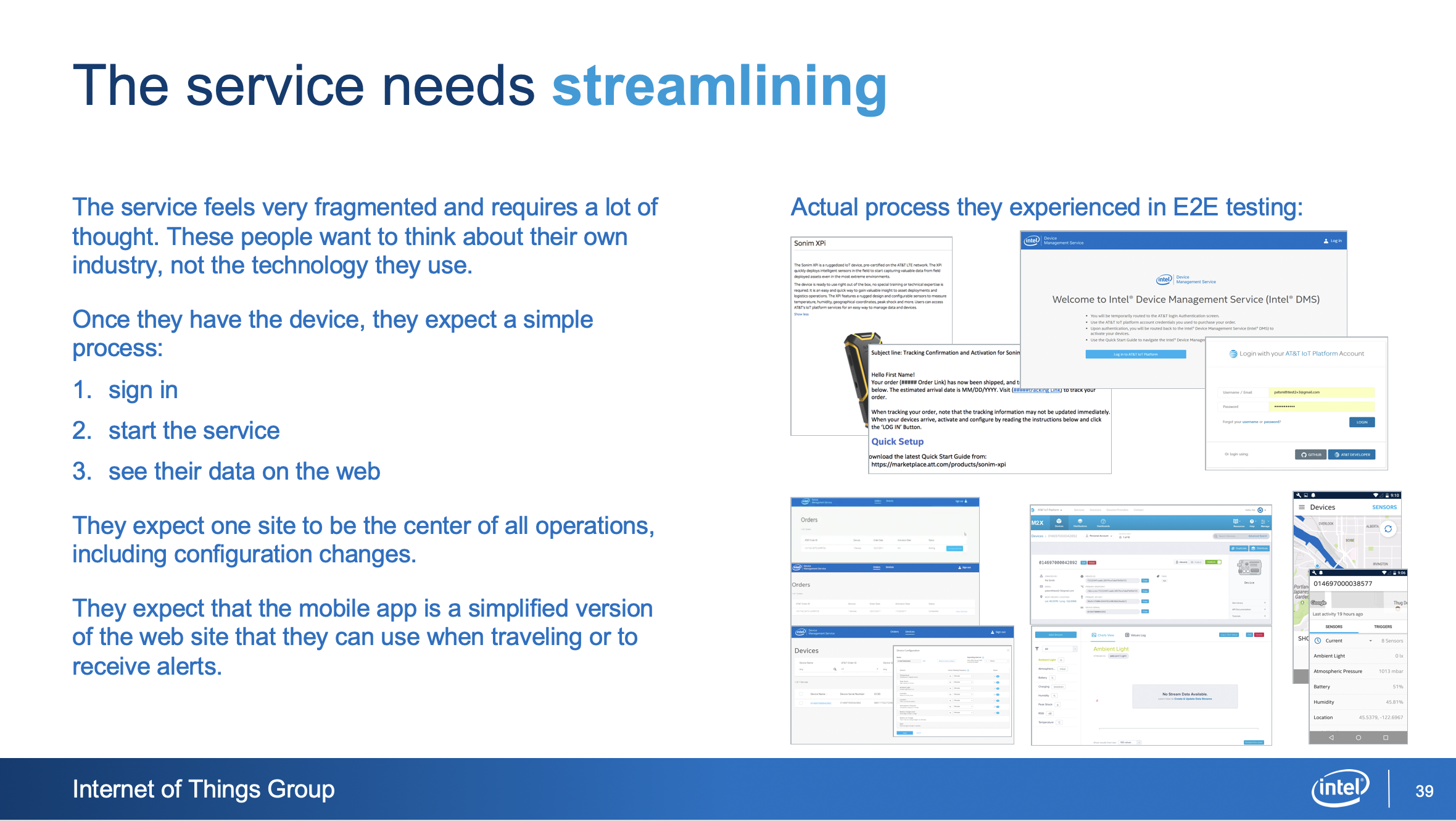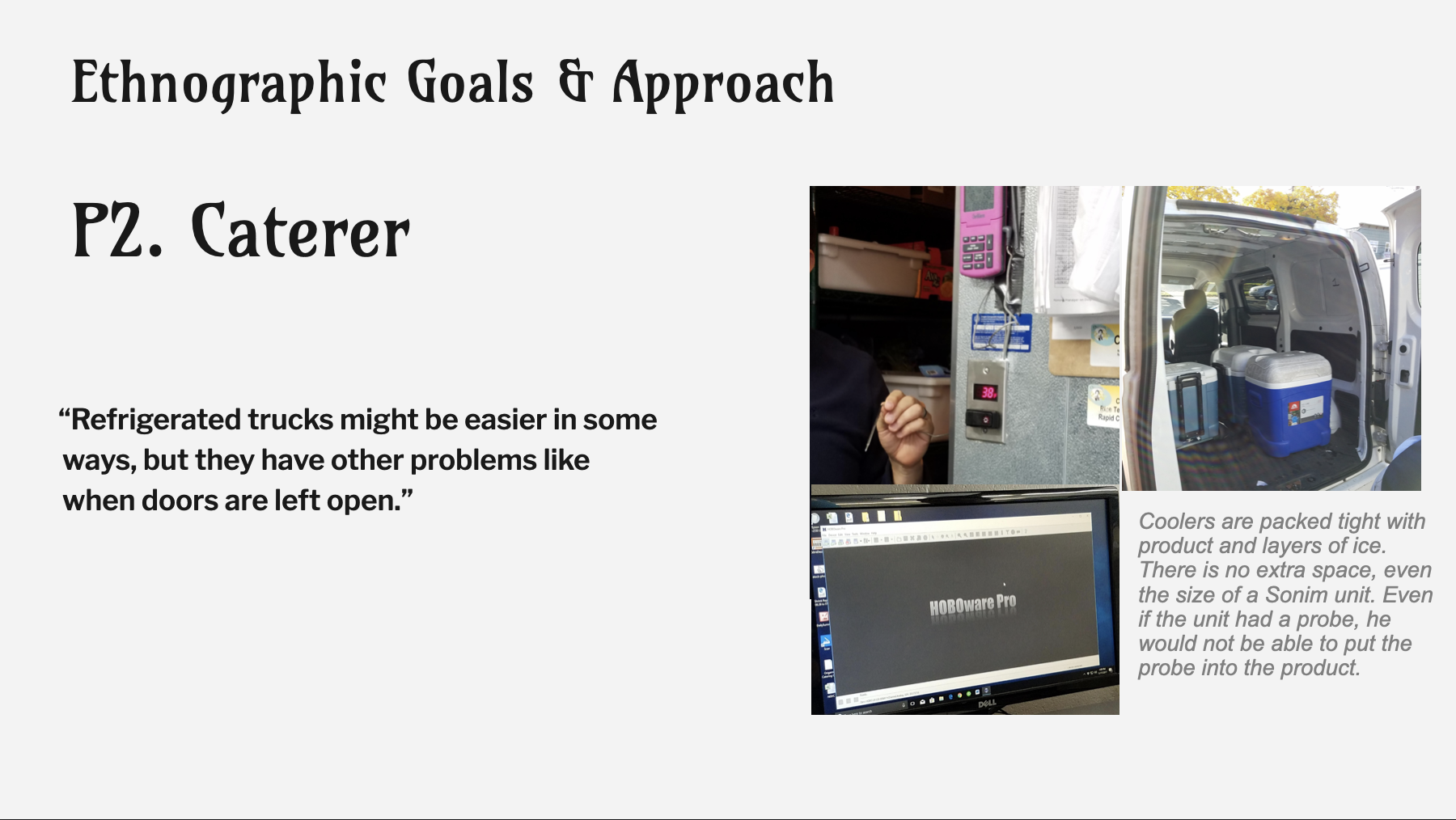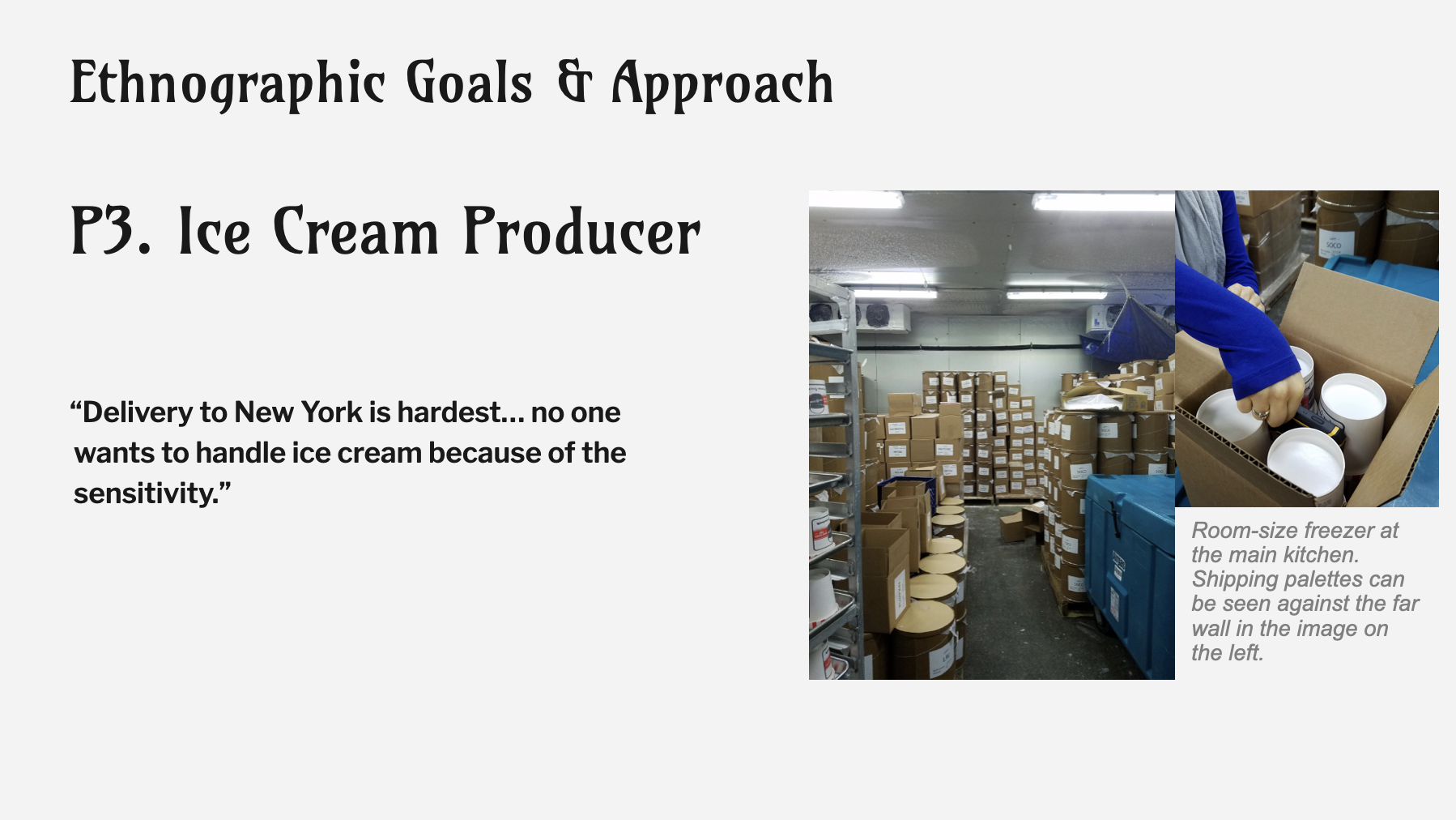
LIQD brought together private & public cloud, and edge hardware and software, global networking, cutting edge sensing devices and cross-OS best in class design and UI to provide companies with constant awareness about their most valuable assets regardless of where they are in the world.
Challenges: Short Timelines & Complexity across Industries and Stakeholders
In May 2017, I joined the LIQD project as the sole UX professional, tasked with shaping the user experience for a groundbreaking multi-device real-time asset tracking solution. My initial focus was to understand the product's capabilities and the diverse needs of our global logistics and telecommunications partners. This involved diving deep into the potential applications of our XPi product, which utilized sensor-based technology across various industries, including transportation, food service, farming, gas and oil, wind power, freight, and healthcare.
To begin, I conducted initial TAM (Total Addressable Market) studies that identified broad, blue-sky opportunities, positioning the XPi product as a versatile solution for nearly every business. This exploratory phase required a comprehensive understanding of the specific needs and pain points within each industry.
Developed UX Strategy
As the sole UX professional, I collaborated with manufacturers, engineers, global telecommunications, logistics partners, design vendors, and the AT&T UX team to ensure alignment and success.
Starting with exploratory work, I validated our assumptions and gathered critical insights from diverse industries. By the end of summer, I developed the UI for web and mobile platforms and created all user-facing content. Fall focused on refining the user journey through iterative testing and validation.
By engaging in extensive user research, exploratory interviews, and ethnographic field studies, I gathered critical insights that informed our UX strategy.
Methods: Storyboards for Discussions
We implemented a comprehensive range of methods to gain deep insights into the user experience. Our efforts included conducting UX training sessions for all teams involved, such as stakeholders, product and project managers, content writers, developers, engineers, and marketing and web developers.
UI Research & Design
To deliver a seamless user experience for the LIQD project, I collaborated with a vendor to design both the front and back ends of the application. Our goal was to provide customers with a way to visualize GPS tracking and condition monitoring data of their products through a highly customizable app tailored to their business needs.
We focused on user experience, adhering closely to Intel® Brand Identity Guidelines for color and typography. Starting with information architecture (IA) and low-fidelity prototype screens, we gathered initial feedback to iterate on the application flow. This process enabled us to identify and implement shared design patterns for both iOS and Android versions.
Following our initial IA phase, we developed high-fidelity wireframes used during user testing sessions. Several rounds of testing on the interactive prototype revealed that users had difficulty finding the information they needed. We discovered that formatting the data in a list view, rather than tile cards, significantly improved usability.
Despite utilizing Intel®’s brand colors to indicate product health or status, we found that other brand elements became confusing. Adjusting these elements helped clarify the interface, ensuring a user-friendly experience across web, iOS, and Android platforms.
Ethnographic Phase: 1st Session
During the ethnographic phase of the LIQD project, our goal was to test the current state of the LIQD out-of-box experience for the Sonim XPi, identify pain points in workflows, digital tools, hardware, and mobile interfaces, and generate actionable recommendations for improvement. Additionally, we aimed to gain a comprehensive understanding of the JOBS TO BE DONE at various business sites, pinpointing existing problems and solutions in place.
We conducted 90-minute lab usability tests, asking business owners to walk through the process from discovering the product on AT&T’s website to viewing live sensor data for the first time. Participants interacted with a static mockup of the AT&T Marketplace site, logged into a pre-release Device Management System (DMS) site to activate their order, and explored a pre-downloaded IoT Display mobile app on an Android phone.
Ethnographic Phase: 2nd Session
To further understand the JOBS TO BE DONE, we visited the participants' worksites, immersing ourselves in environments such as freezers, coolers, delivery vehicles, and other technology solutions. Observing business owners using the mobile app in their real-world settings to view data and perform necessary actions was a revelation. We learned so much about their history, needs, and the practical challenges they faced daily.
Our evaluators, five dedicated individuals from the Portland area, were owners or employees of small- or mid-size businesses responsible for keeping products safe and viable throughout their distribution processes. They represented a range of industries:
Agriculture: Raising, storing, delivering, and selling specialty produce.
Prepared Foods: Creating specialty sushi, seafood, and salads for wholesale distribution.
Ice Cream: Producing, storing, distributing, and selling gourmet ice cream and frozen desserts.
Dairy: Storing and distributing a wide variety of dairy products to institutional customers.
Coffee: Producing, storing, and distributing iced coffee.
Across these industries, we found a consistent reliance on low-tech but essential tools such as spreadsheets, probe thermometers, sensor cards, and on-vehicle trackers. This understanding was pivotal in shaping our UI and ensuring that the final product was aligned with the specific workflows and processes our customers needed, based on their history and requirements.
The ethnographic phase was not just about gathering data; it was about experiencing our users' worlds, which allowed us to create a product that truly met their needs and enhanced their everyday operations.
LIQD Project Summary
The LIQD project was a multifaceted initiative focused on developing a multi-device real-time asset tracking solution. As the sole UX professional, I spearheaded user studies, prototype development, field study ethnography, journey maps, and persona & workflow development and validation. Collaborating with design vendors, I ensured the application adhered to web, iOS, and Android patterns and conventions.
Key actions included challenging the team’s strategic assumptions despite being new to the project and company, and navigating a vendor bankruptcy crisis to ensure project success. This resilience and strategic insight were pivotal in driving the project forward.
We started with exploratory user studies and field ethnographies, immersing ourselves in various industries to understand their unique needs. This was followed by developing detailed journey maps and personas, which informed the iterative design process. Utilizing the insights gained, we created prototypes and conducted several rounds of user testing, refining the UI based on feedback.
The outcomes were significant: we established a comprehensive information architecture for all documentation and developed robust web UI and mobile applications for iOS and Android. The final product included improved instructions shipped with all devices, contributing to a seamless user experience.
The project culminated in the successful launch of a global industrial solution, potentially saving companies millions in property loss and earning a Divisional Recognition Award for its innovative approach and impact.
